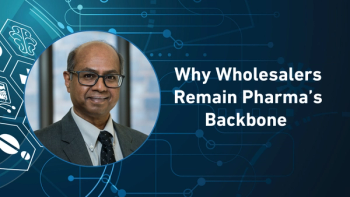
- Pharmaceutical Commerce - January/February 2015
Drug pricing debate is sharpening
Will formularies become a consumer's concern for healthcare provision?
The continuing saga of Gilead Sciences’ Sovaldi and Harvoni drugs, for treating hepatitis C, together with the
What seems to be changing, though, is the process by which patients and, to a greater extent, prescribers, are aware of the formularies, prices and incentives that control what drugs get prescribed. Express Scripts’ much-publicized decision to offer AbbVie’s product alone to a key portion of its client base was followed by CVS Caremark’s decision to do the opposite. And, make no mistake, pricing (and the unpublicized discounts offered to both of those, and other PBMs) drove the decision. While Sovaldi has been out for over a year, AbbVie’s product just entered the market in December. (A private company, AdverseEvents, Inc., that tracks FDA and other reporting on adverse events, issued a report showing a relatively small number of adverse events for Sovaldi, and a somewhat longer list of potential risks for Viekira Pak, concluding that “Both Harvoni and Sovaldi appear to be safer options compared to Viekira Pak, but only close post-marketing monitoring will determine the true safety profile of these medications.”)
The difference in risk profiles is speculative, but it is the rare drug pair that doesn’t show some differentiation among patients. The PBMs have stated that, given sufficient medical justification, they will make any of the products available to patients. But that presupposes that patients and their prescribers can go through some or all of the therapy regime for one drug before being switched to the other. And, the bigger picture here is relevant: the PBMs, and other drug buyers, harp on the value of having competing therapies as a way of controlling drug costs. Think about how, in the near future, the debate between branded biologics and biosimilars (or, as some manufacturers like to stress, “biobetters”) will be conducted. Too, the US government, while it has limitations on what it can dictate to the pharma industry, does have some tools, and
As this issue went to press, an Op-Ed column in the New York Times (“
Articles in this issue
almost 11 years ago
FDA records a banner year in new-drug approvals, with 41almost 11 years ago
Doximity crosses 50% line of engagement with physician populationalmost 11 years ago
Walgreens-Alliance Boots tie-up is formally approvedalmost 11 years ago
Nurses remain the top most trusted profession, says annual Gallup pollalmost 11 years ago
Dohmen acquires Siren Interactive, a rare diseases agencyalmost 11 years ago
UPS Healthcare Logistics picks up an asset in Polandalmost 11 years ago
The Chief Compliance Officer rolealmost 11 years ago
DSCSA dominates HDMA Distribution Management Annual ConferenceNewsletter
Stay ahead in the life sciences industry with Pharmaceutical Commerce, the latest news, trends, and strategies in drug distribution, commercialization, and market access.



